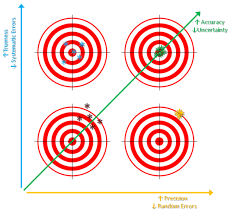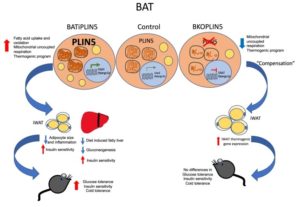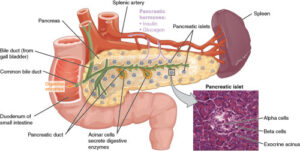Introduction: Trueness, accuracy and precision
The words accuracy, trueness and precision are important differentiated terms when referring to measurements in the scientific and technical context. Generally speaking, accuracy refers to how close a measured value is in relation to a known value or standard. However, the International Organization for Standardization (ISO) uses “trueness” for the above definition while keeping the word “accuracy” to refer to the combination of trueness and precision. On the other hand, precision is related to how close several measurements of the same quantity are to each other. In the field of statistics it is rather common to use the terms “bias” and “variability” to refer to the lack of “trueness” and the lack of “precision” respectively.

Figure 1: Picture showing the most accepted definitions of accuracy, trueness and precision.
How to culture vascularized & immunocompetent 3D models in a standard Multiwell
Accuracy and Trueness
The ISO standard 5725, under the title “Accuracy (trueness and precision) of measurement methods and results”, uses the combination of two terms, “trueness” and “precision” (Figure 1), to describe the accuracy of a measurement method. According to ISO 5725, “Trueness” refers to the closeness of agreement between the arithmetic mean of a large number of test results and the true or accepted reference value [1]. “Precision” refers to the closeness of agreement between different test results.
On the other hand, the Bureau International des Poids et Mesures (BIPM) defines accuracy as the closeness of agreement between a measured quantity value and a true quantity value of a measurand (quantity intended to be measured) [2]. In this case, trueness is defined as the closeness of agreement between the average of an infinite number of replicate measured quantity values and a reference quantity value. Equivalently, the New Oxford American Dictionary gives the technical definition of accuracy as the degree to which the result of a measurement, calculation, or specification conforms to the correct value or a standard [3]. In the same line, the Merriam-Webster dictionary defines accuracy as the degree of conformity of a measure to a standard or a true value [4].
As notated by the BIPM, historically, the term “measurement accuracy” has been used in related but slightly different ways. Sometimes a single measured value is considered to be accurate, when the measurement error is assumed to be generally small. In other cases, a set of measured values is considered to be accurate when both the measurement trueness and the measurement precision are assumed to be good. Care must therefore be taken in explaining in which sense the term “measurement accuracy” is being used. There is no generally established methodology for assigning a numerical value to measurement accuracy. In statistics, trueness is generally referred as lack of bias which is defined as the difference between an estimator’s expected value and the true value of the parameter being estimated. In some experimental cases, some external factors may change the measured value introducing a bias. The bias is defined as the difference between the mean of the measurements and the reference value. In general, the measuring instrument calibration procedures should focus on establishing and correcting it.
Precision Measurements
On the other hand, precision is defined, by the ISO standard 5725 [1], as the variability between repeated measurements (Figure 1). Generally speaking, tests performed on presumably identical materials in presumably identical circumstances do not, in general, yield identical results. This happens since the factors that influence the outcome of a measurement cannot all be completely controlled. All measurement procedures have inherent unavoidable random errors. If a measurement value differs from a specified value, which determines an expected property, in a range within the scope of unavoidable random errors, then a real deviation of the values cannot be established. This variability of the results is normally produced by the measurements environment, operator, equipment (including its calibration), and time period.
Equivalently, BIPM defines precision as the closeness of agreement between indications or measured quantity values obtained by replicate measurements on the same or similar objects under specified conditions [2]. Accuracy may include precision in its wider definition but the two words are not rigorously exchangeable.
Repeatability and reproducibility are included in the definition of precision and used for describing the variability of the measurement method. Generally speaking reproducibility incorporates more effects of influencing variability than repeatability. It is defined as the resulting variation of a measurement process when performed under different instruments, operators, environments, and time periods (conditions of measurement). On the other hand, repeatability refers to the variation arising even when efforts are made to keep constant the instrument, operator and environment, as well as to reduce the measuring time period.
Measurement precision, or more precisely imprecision, is defined numerically by standard deviation, variance, or the coefficient of variation.
Final remarks
A measurement device is both accurate and precise (or simply accurate, depending on the broad definition of this term) when it produces measurements all tightly clustered around the reference (“true”) value with a defined error range. The accuracy and precision of a measurement process are usually established by repeatedly measuring some traceable reference standard. Such standards are defined in the International System of Units (abbreviated SI from French: Système International (d’Unités)) and maintained by national standards organizations.
Tightly related to accuracy, trueness and precision, is the measurement error, also referred as an observational error. This error that can be quantified by different methods is defined as the difference between the “true” value and the measured value. The systematic part of the observational error is generally related to the trueness of the measurement while its random part is linked to precision.
References
- ISO 5725-1:1994. Accuracy (trueness and precision) of measurement methods and results — Part 1: General principles and definitions. 1994. https://www.iso.org/obp/ui/#iso:std:iso:5725:-1:ed-1:v1:en
- BIPM, Joint Committee for Guides in Metrology (JCGM), Working Group on the International Vocabulary of Metrology (VIM). International vocabulary of metrology — Basic and general concepts and associated terms (VIM), JCGM 200:2012. https://www.bipm.org/utils/common/documents/jcgm/JCGM_200_2012.pdf
- In the New Oxford American dictionary (3rd Edition). 2010. https://en.oxforddictionaries.com/definition/accuracy
- In the Merriam-Webster’s dictionary (Nez Edition). 2016. https://www.merriam-webster.com/dictionary/accuracy



